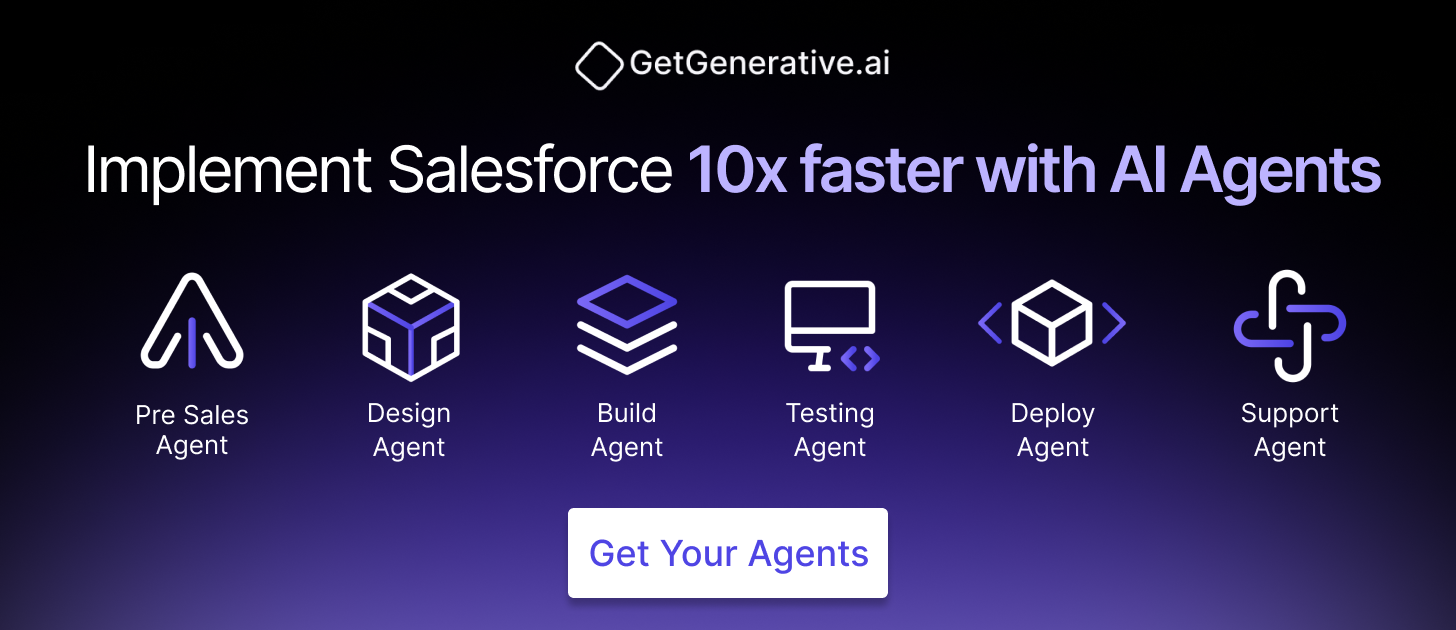Salesforce UAT Best Practices for Smooth Go-Live
Salesforce holds a commanding 20.7% share of the global CRM market as of 2024, cementing its status as the platform of choice for enterprise-scale customer engagement. But with great potential comes high risk – digital transformation projects frequently fall short. In fact, research shows that up to 70% of CRM implementations fail to meet expectations, often due to poor testing, inadequate adoption, or unresolved gaps in business alignment.
Enter User Acceptance Testing (UAT) – the critical final phase before go-live. When executed correctly, UAT bridges the gap between what was built and what the business truly needs. Done poorly, it introduces avoidable risk, undermines adoption, and can trigger post-launch chaos.
In this blog, you’ll walk away with a blueprint for planning, executing, and scaling UAT that ensures smooth go-live and long-term ROI. Let’s get started!
What Is UAT in Salesforce?
User Acceptance Testing is the final validation stage before deployment. It answers a simple but vital question:
“Does this Salesforce solution work for our business users in real-world scenarios?”
Unlike system or unit testing, UAT isn’t concerned with whether formulas calculate or components load—it focuses on whether actual business processes perform end-to-end.
Key Characteristics of UAT:
- Performed in a sandbox or staging environment
- Led by business stakeholders, often a BA or Product Owner
- Tests realistic, cross-functional business scenarios
- Requires formal sign-off before go-live
What UAT Is Not: Common Misconceptions
Recognizing missteps is just as critical as following best practices. UAT is not:
Misconception | Reality |
A quick UI walkthrough | UAT requires structured, in-depth scenario testing |
Optional for agile projects | UAT is essential regardless of methodology |
Developer-driven testing | UAT must be driven by end users, not developers |
A siloed QA task | UAT is cross-functional and includes business, IT, and compliance teams |
Top Challenges in Enterprise Salesforce UAT
1. Complex Configurations and Integrations
Salesforce environments in enterprises often span multiple clouds—Sales, Service, Marketing, etc., plus third-party integrations. A missed dependency (like ERP sync) can break workflows at go-live. UAT must simulate real-world flows across systems to validate these dependencies.
2. Large Data Volumes
Test scripts must validate performance under realistic data loads if your org handles millions of records or thousands of users. Salesforce recommends Full or Partial Copy sandboxes to ensure batch jobs, reports, and lookups behave as they will in production.
3. Regulatory Compliance
UAT is a gatekeeper for risk. In highly regulated industries (finance, healthcare, public sector), UAT must verify controls like field-level security, audit logging, and data handling. One U.S. bank delayed its launch by three weeks after UAT revealed a potential violation in loan processing – a delay that ultimately avoided regulatory penalties and reputational damage.
4. Stakeholder Misalignment
Cross-functional collaboration is vital. Delays, rework, or conflicts arise without a shared understanding of ownership and timelines. Define decision-making governance early.
5. Time Constraints
UAT is often rushed to meet release deadlines. But cutting corners leads to missed defects and user frustration. Allocate 15–20% of the project timeline to UAT, and resist the temptation to compress it under pressure.
Also Read – Automated Testing in Salesforce: Options, Pros & Cons
Planning for a Successful Salesforce UAT
✅ Create a UAT Test Plan
Outline scope, objectives, exit criteria, timelines, and tools for issue management. Include metrics like pass rates and open defect counts.
✅ Build a Cross-Functional Team
Include a UAT Lead (often the BA), Business Owners, Power Users, and IT/Dev Support. Assign clear responsibilities and escalation paths.
✅ Provision the Right Environment
Use a Full Copy sandbox where possible. Migrate representative data, enable security configurations, and integrate with partner systems. A stable, production-like environment is essential.
✅ Prepare Test Data and Scripts
Script scenarios that reflect real-world processes. Include both positive and negative paths. Cover edge cases like failed transactions or permission errors.
✅ Train Testers Before Execution
Hold kickoff sessions to set expectations, walk through the schedule, and clarify issue logging protocols. Brief testers on what success looks like – and how to report concerns.
Best Practices for Executing UAT
Once planning is complete, it’s time to validate Salesforce in the hands of the people who matter most – your end users. This phase ensures not only functionality, but usability, compliance, and adoption.
1. Execute Real-World Business Scenarios
Testers should mimic real-life workflows: sales reps entering multi-product deals, agents escalating service cases, managers running reports. Go beyond scripted flows—simulate typical and edge-case usage.
2. Use Real End Users (Not Just Admins)
Select users from actual business units. As Salesforce recommends, these should be the people “who will use Salesforce day-to-day.” Their feedback is practical and grounded in operational reality.
3. Maintain a Daily Communication Cadence
Hold quick standups (daily or every other day) to review blockers, tester progress, and issue severity. Create visibility for stakeholders via dashboards showing pass/fail rates, open bugs, and severity trends.
4. Log and Categorize Defects Clearly
Capture:
- Steps to reproduce
- Expected vs. actual result
- Screenshots or recordings
- Business impact (critical, major, minor)
Only critical defects should delay go-live, but all issues should be documented and prioritized. Transparency prevents surprises.
5. Prioritize Transparency Over Perfection
Don’t hide issues to meet deadlines. If launch criteria aren’t met, clearly report why and recommend options (fix and retest, defer launch, workaround + training). Leaders prefer visibility over failure.
6. Avoid Tester Fatigue
UAT can be tedious. Keep it energizing:
- Recognize contributions (even small shout-outs help)
- Create a collaborative space (shared chat, informal feedback loops)
- Offer snacks, breaks, or incentives.
Motivated testers = better feedback = fewer surprises post-launch.
7. Use Tools Strategically
Automation can assist with regression, data loading, or validating requirements traceability, but UAT remains a human-led process. Use AI or automation to supplement, not replace, real-world feedback.
8. Iterate in Rounds
Especially for larger orgs, run multiple cycles:
- Round 1: Find and fix core issues
- Round 2: Regression + verify fixes
- Round 3 (if needed): Final retest + sign-off
UAT is not a “one-and-done.” Build time for these loops into your release schedule.
Also Read – AI Chatbots vs AI Agents: What’s the Real Difference for Salesforce Users?
Final Checklist
Category | Best Practices |
Test Planning | Document objectives, exit criteria, scripts, and tools |
Team Composition | Include cross-functional team: BA, users, IT, sponsors |
Environment Readiness | Use Full/Partial Copy sandbox, integrated and production-like |
Data Preparation | Populate with realistic, role-based test data |
Test Execution | Prioritize high-impact workflows and business-critical flows |
Communication | Daily syncs, defect dashboards, real-time escalation |
Defect Management | Log, categorize, and prioritize issues with clarity |
Leadership Sign-Off | Base Go/No-Go on data-driven criteria and stakeholder consensus |
Post-Launch Follow-up | Enable feedback loops and usage analytics |
Go/No-Go: Making the Right Call
At the conclusion of UAT, a formal Go/No-Go decision is required.
Go Criteria Should Include:
- 100% pass rate on all critical test cases
- No open P1 defects
- Stakeholder sign-off from business, IT, security, and compliance
If the criteria are met, proceed confidently. If not, pause. Fix first, even if it delays launch.
Always document:
- Unresolved items (added to post-launch backlog)
- Deferred improvements
- Lessons learned from UAT
Post-Go-Live: UAT Shouldn’t Stop at Launch
Enterprise Salesforce implementations evolve constantly. Mature organizations treat UAT as an ongoing process, not just a pre-launch task.
1. Establish Continuous Feedback Channels
- Dedicated email or form to capture bugs and ideas
- Slack/Teams integration for real-time issues
- Use Salesforce’s Ideas object, Service Cloud, or a shared portal
2. Analyze Usage Metrics
Track adoption using:
- Lightning Usage App
- Tableau dashboards
- Login and feature usage trends
Low usage = process mismatch or training gap.
3. Empower Champions
Nominate Salesforce Champions in every business unit:
- Share best practices
- Represent user feedback
- Test future enhancements
Champions build a culture of continuous improvement.
Also Read – Salesforce AI Cloud vs Third-Party AI Integrations: Pros and Cons
Final Thoughts
When done right, Salesforce UAT is not a bottleneck—it’s a differentiator.
It ensures:
- Smooth go-lives
- Confident users
- Accurate reporting
- Regulatory compliance
- Long-term ROI
In other words, UAT builds trust in the system, the project team, and leadership.
GetGenerative.ai gives you an AI-powered workspace and expert agents to manage the entire Salesforce implementation lifecycle—from Pre-Sales to Go-live.
Create proposals, define scope, generate user stories, validate designs, and more—end-to-end, all in one place.
Book your demo today.




